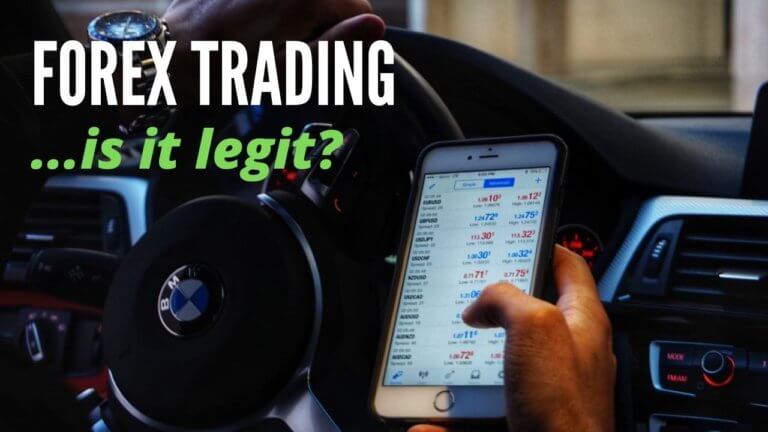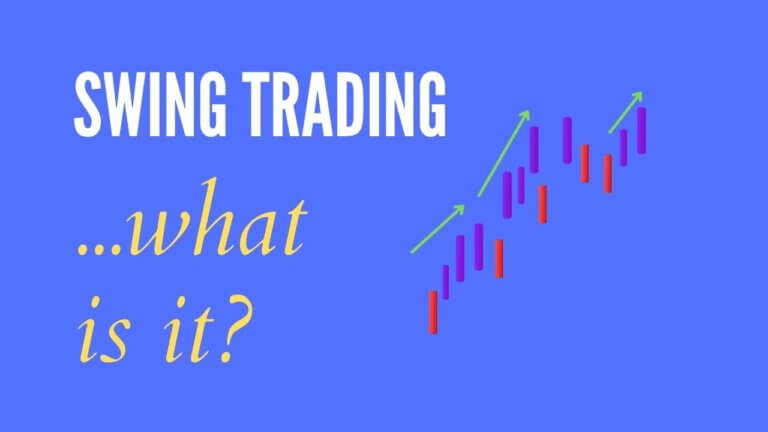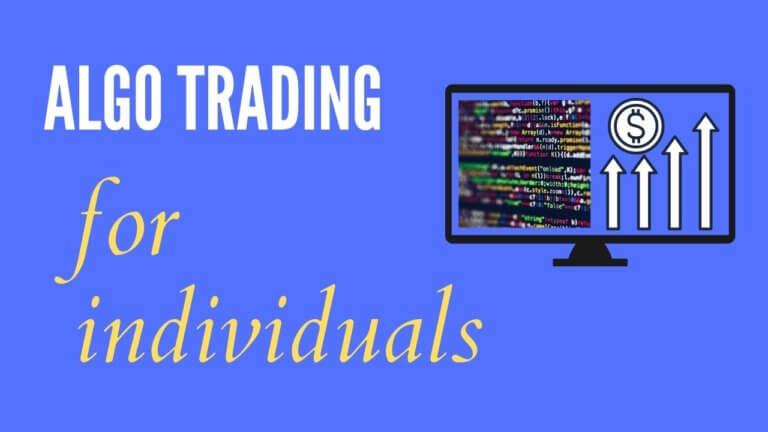Forget About Making Money In Forex (And Trade Like A Professional)
The real secret to trading like a professional isn’t about the money.
Please Note: Trading financial instruments, including forex, is risky—please read our risk disclaimer
If you’re an aspiring forex trader, like many others you probably want to trade forex to make money.
But it’s not so straightforward.
Unless you’ve been lucky, or if you’re one of the few individuals who have some sort of inherent trading ability, you may have only had mixed trading success to date.
Yet, there are countless operators who’ll tell you that you can make a fortune trading forex—”just a few minutes a day, following a proven system, trade at any time and on any device!“
Unfortunately, many of these operators are overly optimistic, or worse, they are scams.
But forex trading is legitimate and it can be profitable, provided you follow the right approach and have realistic expectations.
To trade forex like a true professional, however, it’s not about the money at all.
It’s about the skill—the ability to trade profitably, consistently, and with very good risk management.
If you can demonstrate skill, according to veteran trader Steve Patterson, then the money will follow.
How much can you really make trading forex?
Patterson is a professional trader with nearly 40 years of experience. He’s worked for some of the world’s largest proprietary trading firms and made his way up from being a messenger on the trading floor.
From those early beginnings, Paterson adapted to the internet age by mastering web-based trading over short timeframes and more recently has become a leading educator.
Patterson speaks from experience when he discusses trading.
And he has a pragmatic, realistic view of what most traders can achieve.
According to Patterson, a trader who makes 2-5% profits per month, consistently over time, is a very good trader.
It’s very hard to do better than that over the long term.
This may not sound like much, but it’s actually a very healthy rate of return.
On an annualized basis it translates to 27-80% per annum (assuming all profits are reinvested and ignoring taxes)—a rate of return that many investors would be happy with.
Nevertheless, many aspiring traders have far higher expectations—10-20% per month, year after year, for instance—and this is simply unrealistic for most.
How professional traders make money
Rather than aiming for unrealistic returns, says Patterson, it’s better to aim for realistic returns that you can generate consistently.
Why?
Firstly, realistic returns are actually achievable with persistence, practice, and the right approach.
Secondly, consistent returns get noticed.
This is what professional traders aim for.
If you can show consistent returns over time, then you have a chance of trading other people’s money—this is what professional traders do, and how the best of them make real money.
When you trade other people’s money, you keep a percentage of the profits that you make using their money. As you become good at this, you can trade a lot of capital on behalf of others—and if you do this well, you will make a lot of money.
Consistency matters
There are a variety of ways to trade other people’s money if you can demonstrate consistent trading skills. And the best way to show this is with an audited track record.
In an interview with Etienne Crete—also a successful trader and educator—Patterson cites an anecdote when he took one of his audited track records to a local financial advisory firm and was almost immediately offered the opportunity to trade clients’ (ie. other people’s) money. This is because Patterson’s track record showed consistency.
Most individual traders nowadays don’t need to seek out an advisory firm, however, as there are plenty of proprietary trading firms willing to provide capital to consistently profitable traders.
One such firm, The 5%ers, has a systematic program for evaluating traders for this purpose. As the traders achieve a series of profit targets, they’ll be awarded larger amounts of client capital to trade.
According to Gil Ben Hur, co-founder of The 5%ers, the traders who succeed in this program are those who temper their trading for consistency, not those who “step on the pedal” or go “all-in” with large, risky trades.
Proprietary firms value consistency, and a key part of this is limiting the size of drawdowns (periods of cumulative losses), so proprietary firms pay attention to a trader’s drawdown history.
What does consistency look like?
To demonstrate consistency as a trader, you should be aiming for a relatively smooth equity curve.
What does this mean?
The equity curve is simply the balance of your trading capital over time.
If your profits are relatively consistent, then your equity curve will increase at a fairly consistent rate—it will look more “smooth” rather than “lumpy”, which may be caused by large or frequent losses (drawdowns).
Consider the simple example in the chart below.
Here, the equity capital curves of three simple strategies are shown (assuming no leverage), where the USD:AUD currency pair was traded over the calendar year 2020. The equity capital is assumed to start at $100.
The three strategies are:
- No risk management—Weekly returns of the USD:AUD currency pair are accumulated over the whole of 2020.
- Stop loss—In any given week, a stop-loss is triggered (position closed out) if the return falls to -0.5% for the week, ignoring taxes and transaction costs, and reinvesting capital the following week.
- Stop loss + take profits—In any given week, either a stop-loss is triggered (if the return falls to -0.5% for the week) or a take-profits is triggered (if the return rises to +1.5% for the week), again ignoring taxes and transaction costs, and reinvesting capital the following week

What do you notice?
With no risk management (curve 1, bottom of chart), the equity capital curve is quite lumpy and exhibits large drawdowns—2020 wasn’t a great year for the USD relative to the AUD.
In curves 2 and 3, however, where disciplined risk management is exercised, the equity capital curves are smoother and rising—there are no large drawdowns.
For this particular currency pair in 2020, the best performing curve is when stop losses are exercised but profits are allowed to run (curve 2, top of chart). When take-profits rules are added, the performance was less strong but still positive over the year (curve 3, middle of chart).
This is only an example, of course, and it excludes consideration of taxes and costs like spreads or slippage. But it illustrates the type of equity curve that proprietary trading firms would find attractive—curves 2 or 3, for instance—with fewer drawdowns and with rising equity capital.
In the case of the USD:AUD currency pair over 2020, it appears that simple risk management went a long way in improving the equity curve!
In summary
- If you’re an aspiring forex trader, like many others you probably want to make money
- But forex trading isn’t easy, despite what some may tell you, and even successful (consistently profitable) traders find it hard to make high returns
- According to trading veteran, Steve Patterson, focusing on making money is missing the point—focus instead on developing your trading skills
- If you want to make money as a trader, says Patterson, your best opportunities will come from trading other people’s money—and to do that, you need to show that you can generate consistent trading profits
- There are plenty of proprietary trading firms that will let you trade clients’ money in exchange for a share of profits if you can show consistent trading profits—this is how professional traders make really good money
- To show consistent trading profits, you need to generate a “smooth” equity curve, ie. the growth of your trading capital account should avoid large drawdowns and increase steadily over time
- To trade like a professional, therefore, and enjoy the fruits of trading success as professionals do, don’t focus on the money—focus on developing the right trading skills and reap the rewards that follow!
Giri Rabindranath is a CFA Charterholder and holds a Master’s degree in Finance. He has over 25 years of professional experience in the financial industry. The views expressed in this article are solely for informational purposes and do not represent financial advice in any way whatsoever.
Risk Disclaimer: Trading CFDs, forex, and other financial instruments, especially if leveraged, is risky. It isn’t suitable for everyone and may result in loss, sometimes substantially more than the initial investment. Depending on the type of instrument, you may not own or have rights to the underlying assets. Past performance is no indication of future performance and tax laws are subject to individual circumstances and are also subject to change at any time. The information on this website is general in nature and doesn’t take into account your personal objectives, financial circumstances, or needs.





